After a quick work visit to Thailand, I spent a couple more days in Cambodia and then flew back to Jakarta, where it was another week of work meetin s. That weekend I had free, so of course I took the chance to do another birding trip, this one to East Java. While West Java gets most of the hype among birders, East Java has a few specialties of its own, including a few endemic birds and some savanna and dry forest birds that are rather hard to find elsewhere on the island. I once again went with Bali Birding Tour, with whom I'd had a great time in Bali.
On the morning of March 29, I flew from Jakarta to Banyuwangi, a small city on the far eastern tip of Java. At the airport I met up with Bayu, a colleague of Hery's who would be my guide for the weekend, along with Markus the dependable Bali Birding Tours driver. I was surprised to see it would be a different guide this time, but Bayu proved to be excellent- a very good birder, and great company and conversation as well. Bali Birding Tour is a great set-up and I highly recommend them to visiting birders who don't have time to organize a trip all on their own.
We immediately started the drive from Banyuwangi up to Mount Ijen, where we would spend our first day in East Java. The Ijen volcanic complex is best known for its highly acidic crater lake and the "blue fire" emitted by its lava, caused by the high sulphur content. For birders on the other hand it's best known as the main site for Grey-breasted Partridge, a little chicken endemic to far eastern Java (in West Java it's replaced by Chestnut-breasted Partridge, which I saw on Gunung Gede).
The drive up Ijen took us through terraced rice fields and then into mountain forest as we climbed the flanks of the volcano. Java is well known for its dense population, habitat destruction, and rampant trapping of wild birds, but it also has many surprisingly well-maintained national parks, of which this is one. It's a little frustrating not to have anything like this in the Philippines: a nice road leading through primary forest that's not being used as a way for people to go in and cut down more trees.
It was mid-morning by the time we arrived at our first birding spot: Erek-Erek Jungle Park, the primary spot for the Grey-breasted Partridge. That was a little late for the partridges, which are easiest at sunrise, but we didn't have much of a choice as that was the only time I could fly in. There's a local guy who has set up a feeding station for the partridges, along with a blind for birders and photographers to hang out. We set up at the hide and waited for birds to appear. That didn't take too long, as soon a Scaly Thrush (sometimes split as the Indonesia-endemic Horsfield's Thrush) hopped in to eat the mealworms we had put out for the partridges. I had gotten only a very poor look at this before on Gunung Gede, so it was great to get much better views this time. A couple more birds eventually appeared, including a juvenile begging for mealworms from its parents. One of them had a bit of a face infection, which I suspect had come from the feeding station. I've made my peace with feeding birds and I think the benefits to environmental awareness and ecotourism outweigh whatever the costs are to disrupting the habits of birds, but there certainly are some downsides. Of course, those birds are also better-fed than just about any other Scaly Thrush in existence, so it's probably still a net positive for them.




 |
| Scaly (Horsfield's) Thrush |
 |
| The feeding station |
More birds started to appear, although not the little chickens we were hoping for. Instead, there was a real chicken: a wild Red Junglefowl that came in and started feeding. I'd seen these before in many places, but it was nice to get an extended look at a properly wild bird in its native range. Still very much a chicken though. A Sunda Thrush also flew in briefly but didn't pose for a picture. That one I'd had practically hopping across my feet on Gede so I didn't mind- it was only now that I realized that Sunda Thrush is generally the much more difficult of the two! A Snowy-browed Flycatcher was hanging around the back of the feeding station, and we could hear many birds calling from the canopy: Pink-headed Fruit Doves, Sunda Cuckooshrikes, Sunda Cuckoos, Lesser Racket-tailed Drongos, and Mountain Leaf Warblers, to name a few. That's the downside of hanging out in blinds, and part of why I think I'll always be a birder rather than a photographer: it's very hard to properly look for anything unless it perches directly in your narrow field of view.
 |
| Immature male Red Junglefowl |
 |
| Female Red Junglefowl |
 |
| Snowy-browed Flycatcher |
We waited at the blind for two and a half hours, but although we heard Grey-breasted Partridges calling, they never came into view. That was a little disappointing, and not really how I wanted to tick a lifer, but we had other targets and there were more chances later on. We got back into the car and continued up the mountain, until we got to a little area of montane heathland in a saddle between two volcanic peaks. This was where hikers generally started the midnight hike up to see the blue lava, and while I couldn't see any blue lava from there I could certainly smell the sulphur. We spent some time scrutinizing the spindly pine trees for Barred Cuckoo-Dove, one of my targets for the trip, but all we saw were lots of Little Cuckoo-Doves. It was a pretty area though, and I was happy to enjoy the flowering meadow and cool mountain air.
 |
| The highland grasslands and tourist facilities |
 |
| Tropical Pokeweed flowers |
 |
| Some sort of tiger moth |
 |
| Lesser Dart |
From the saddle we started walking back down along the road in search of other mountain birds. It wasn't too long before we came across a mixed flock of small birds, including Cinereous Tits, Rusty-breasted Whistlers, Little Pied Flycatchers, and Sunda Warblers. Javan Bush Warblers and Sunda Bush Warblers were singing but not seen, and later on we came across some larger birds including Sunda Cuckooshrikes and Javan Bulbuls. It was fun birding, as mountain birding always is, but very few birds posed for decent pictures.
 |
| Cinereous Tit |
 |
| Rusty-breasted Whistler |
 |
| Sunda Cuckooshrike |
 |
| Sunda Cuckooshrike |
 |
| Female Little Pied Flycatcher |
 |
| Javan Bulbul |
 |
| Southern Red Muntjac |
 |
| Some kind of march fly (Penthetria sp.) |
 |
| The road up Gunung Ijen |
We got back in the car and drove down a bit, looking and listening for other birds. Not far down, the car screeched to a halt as we heard the calls of a Javan Flameback! We rushed to get out of the car and get a good look, but annoyingly enough it retreated uphill as soon as it saw us, and all I saw was a giant yellow woodpecker flying away from me. That was a little annoying, but the flameback is an extremely rare bird that very few people get good looks at, so I was happy with whatever I could get. Soon after we heard the strange whooping song of a Javan Scimitar Babbler and after a bit of effort got good looks (and bad pictures) of a pair of birds singing from deep within a bush.
 |
| Javan Scimitar Babbler |
It was mid-afternoon by then, and the afternoon rains soon set in. We continued heading down the mountain, stopping for a nice flock of Sunda Minivets that were far too high up for a picture, but it was getting darker and the rain didn't seem to be letting up. The first day was a bit of a bust in terms of getting good looks at most of my target birds, but we would have another chance to go up there so I tried not to worry about it too much. We stopped at a restaurant on the way down to have our iftar (it was Ramadan so Bayu and Markus hadn't eaten all day, while I opted out of lunch for solidarity), and then headed to the hotel to sleep. There were Savanna Nightjars calling outside my window all night.
The next morning we left before sunrise to head to Alas Purwo National Park. The national park occupies a peninsula sticking out of far southeastern Java, so far east it's due south of Bali. It was set aside to protect some of Java's last remaining lowland dry forest and savanna, particularly the endangered Banteng (basically a fancy cow). It's also well-known among surfers for having one of the best surf breaks in Asia, although personally the further I am from giant waves the better. I had lots of targets at Alas Purwo, and I hoped for a better day than the previous one. I needn't have worried; it ended up being one of the best days of birding I've had this year.
As we drove in around sunrise we stopped for a flock of gorgeous Green Peafowl grazing in a farm field near the edge of the forest. I was thrilled to have seen one of my main targets, but Bayu assured me we would have much better looks later on. We stopped again for a small group of Wild Boar, a mammal lifer for me, foraging on the forest floor. Finally, we got out of the car in a stand of introduced mahoganies, close enough to the coast I could hear the roar of the waves. It was just about the least attractive habitat I could imagine, full of non-native trees and sparse undergrowth, but Bayu told me it was one of the best spots for Javan Blue Flycatcher. We spent quite some time wandering around the ugly forest looking for it, but there were no flycatchers around, and while we did hear Black-crowned Babblers singing we never got a good look.
 |
| Wild Boars- interesting that the same species can be found throughout Eurasia all the way to Scandinavia! |
 |
| Searching for Javan Blue Flycatcher |
We got back in the car and continued on. We stopped after about a kilometer when we heard the calls of a Streaky-breasted Spiderhunter, a Javan endemic that was another of my main targets. It took some effort but I eventually got great looks and decent pictures- in fact, some of the best pictures of this species ever taken, though it's a pretty low bar. Bayu played the tape of a Fulvous-breasted Jungle Flycatcher, and soon after a Javan Blue Flycatcher started responding! Apparently the two have similar enough songs they'll respond to each other, though they look very different. Several birds were singing, and eventually a female bird flew across the road and perched nicely for a few seconds- another extremely rare and poorly-known bird for our list.
 |
| Streaky-breasted Spiderhunter |
 |
| Female Javan Blue Flycatcher |
 |
| Scalloped Grass Yellow |
With some of the day's toughest targets out of the way, we got back in the car and drove to the ranger station, where there was a pavilion looking out on a beautiful stretch of grassland. The grassland was home to a large herd of Banteng, along with dozens of spectacular Green Peafowl and a few stalking Lesser Adjutants. I'd only heard the peafowl the previous weekend in Cambodia, so it was great to see them well this time. Incredibly well in fact- though the peafowl in the park are completely wild, they've become accustomed to people, and have even been trained to come when the rangers whistle for them, as they expect to be fed. Green Peafowl are huge and superlatively beautiful, but like all Phasianidae at the end of the day they're really just big chickens.
 |
| Green Peafowl |
 |
| Lesser Adjutant |
 |
| Female Banteng |
 |
| Male Banteng |
 |
| Javan Rusa |
 |
| The Alas Purwo savanna |
 |
| Peacocks on the savanna |
After I'd had my fill of the peacocks, we headed to a blind the rangers had set up behind the station where Black-crowned Babbler often came by. We sat there for half an hour or so, but no birds came by so we eventually headed back out. On the way out we heard a Maroon-breasted Philentoma singing, and were able to track it down off the muddy trail, although it flew off before I could get a good look or picture. Back where we'd parked the car, there was a gorgeous male Green Peafowl perched up in a tree showing the beginnings of a proper peacock tail (it wasn't breeding season yet so most of the birds still had short tails). Black-banded Barbets were calling all around and we eventually saw one perched up in a tree- I was surprised to find that they're actually enormous by barbet standards! We also got a brief look at a Red-billed Malkoha, another target, but it remained typically skulking and out of sight.
 |
| Behold, a Maroon-breasted Philentoma! |
 |
| Green Peafowl |
 |
| Black-banded Barbet, an uncommon Java endemic |
 |
| Red Percher |
 |
| Odontomachus rixosus, a trap-jawed ant |
We started walking down the dirt road by the ranger's station, looking for some of our other targets. It was my favorite style of birding- walking through the woods and hoping something interesting will come along. We heard the distant honking of Rhinoceros Hornbills, a bird I hadn't seen in years, but they were very far away. Some bulbuls were calling just off the road, including Olive-winged Bulbuls, Cream-vented Bulbuls, and Sooty-headed Bulbuls, while the bulbul highlight was a gorgeous Ruby-throated Bulbul. We also got quick looks at a Large Woodshrike of the very distinctive Javan subspecies, looking very different from the birds I'd seen in Cambodia. A Laced Woodpecker and a beautiful Banded Woodpecker flew through, although neither wanted to pose for a picture, and a Changeable Hawk-Eagle flew through being chased by Slender-billed Crows. We heard the keening song of a Banded Kingfisher, and after a great deal of searching I finally spotted a female bird perched stock-still on a branch nearby us. Kingfishers are some of my favorite birds and this species had long been a target for me. I was surprised by how small it was- though even the female had some spectacular coloring.
 |
| Cream-vented Bulbul |
 |
| Ruby-throated Bulbul- maybe one of the best-looking bulbuls out there? |
 |
| Large Woodshrike |
 |
| Banded Woodpecker |
 |
| Female Banded Kingfisher |
 |
| Grenadier |
 |
| Orange Albatross |
 |
| Euploea eleusina |
It was midday by then, and we decided to try a different area of the park. Markus drove us to another ranger station, which was nearby one of the beaches famous for its surfing. We walked around for a bit looking for mixed flocks, including my main target Javan Leafbird, but there were none to be found, although we did see a nice pair of Oriental Pied Hornbills. There were also lots of Long-tailed Macaques and Javan Lutungs around. Macaques are up there as some of my least favorite mammals, being an unfortunate mix of very common and very ill-tempered. Lutungs on the other hand are some of my favorite- surprisingly beautiful, and with a generally very gentle disposition.
 |
| Oriental Pied Hornbills |
 |
| Javan Lutung (also called Javan Langur) |
We got back into the car and started driving to a different spot, but once again came to a screeching halt as we heard the call of a Javan Flameback! This time Bayu and I were able to get into the woods and ended up finding a gorgeous pair feeding on a tree right in front of us! Bayu got some of the only recordings of a wild bird, and I was able to get almost certainly the best pictures ever taken (at least the best ones online) of this exceedingly rare bird. They were only recently split from Greater Flameback, and seem to hang on in only a few spots in Java and Bali. They're also apparently quite wide-ranging and don't really stick to small areas, which makes them quite difficult for birders to find. Getting this good of a view of them was a major highlight, both for me and for Bayu.
 |
| Female Javan Flameback- they were split from Greater Flameback in part because the female has a bright yellow crest |
 |
| Male Javan Flameback |
Flush with success, we returned to the car and drove down a bit further, to a gorgeous beach facing south onto the Indian Ocean. There was no-one there but a teenage couple that clearly would have preferred to have the beach to themselves (sorry guys), so I spent a bit enjoying the beach and the sea breeze, along with the White-nest Swiftlets and distant Great Crested Terns and Brown Boobies flying by. In the beach forest we came across a little mixed flock, with another Streaky-breasted Spiderhunter, Olive-backed Tailorbirds, and at long last a pair of Javan Leafbirds. The leafbirds have recently been re-lumped with Blue-winged Leafbird, but I'm hoping they get re-split as well once there's been more research.
 |
| White-nest Swiftlet (I assume) |
 |
| Female Javan Leafbird |
 |
| Male Javan Leafbird |
 |
| The beach forest |
 |
| The beach of Alas Purwo |
We returned to the savanna area, and tried the bird hide once more as apparently birds are more likely to feed there in the afternoon. Sure enough, after 20 minutes or so a beautiful Black-capped Babbler hopped in to feed on mealworms, shortly followed by a couple of Horsfield's Babblers. Back at the savanna, I enjoyed one more look at the Bantengs and the Green Peafowl.
 |
| Black-capped Babbler- the Javan subspecies is quite distinctive and will probably be split soon, which I guess means I have to look for it in Borneo and Thailand too |
 |
| Horsfield's Babbler |
 |
| Green Peafowl detail |
 |
| Banteng |
By that point I had seen all of the possible targets at Alas Purwo, so we headed back to Banyuwangi, stopping at sunset for our iftar. The next day, we left the hotel before sunrise and drove up Ijen once more for another try at the mountain targets. We arrived at the partridge hide a little after sunrise, and found ourselves in the midst of a cold drizzle. Despite the discomfort we tried once more for the partridges, sitting in an uncovered hide trying not to get too cold and wet. Thankfully it paid off- a group of seven Grey-breasted Partridges eventually came in and started feeding! They were surprisingly good-looking birds, with striking white patterns on the head and golden stripes on their wings. There was even a fuzzy baby partridge there foraging with the adult birds. At the other hide the Horsfield's Thrush was still hanging around, and we dared to step out to get a look at a passing mixed flock, which finally got me good views (and very bad pictures) of my lifer White-bellied Fantail.







 |
| Grey-breasted Partridge |
 |
| Baby partridge! |
 |
| Horsfield's Thrush |
 |
| White-bellied Fantail |
Up at the saddle, there was a gorgeous male Green Junglefowl foraging nearby the parked cars- the fourth species of chicken for the weekend! Scanning the spindly pines was a greater success this time, as we were finally able to spot several perched Barred Cuckoo-Doves among the Little Cuckoo-Doves. WE scanned around the meadow looking for the endemic subspecies of Brown Prinia, but to my surprise I ended up spotting a Chestnut-capped Babbler instead! I had seen this species in Cambodia before but apparently the Javan subspecies is quite rare, and has been (rather optimistically) split by some. Soon after I spotted a very distant Brown Prinia singing- also sometimes split from the birds in mainland Southeast Asia, though I again I think that's rather optimistic.
 |
| Green Junglefowl |
 |
| Barred Cuckoo-Dove |
 |
| Chestnut-capped Babbler |
 |
| Brown Prinia |
 |
| Brazilian Vervain flowers |
 |
| Big-headed Lagoon Fly |
I had seen all my targets for the trip at that point, but we had some time left so we walked down the mountain road once again. It was the middle of the day but still quite birdy, with the usual mixed flocks passing through in abundance. We got great looks at Sunda Bush Warblers and decent looks at another Javan Scimitar-Babbler, while Crescent-chested Babblers refused to pose for a decent picture. Orange-spotted Bulbul was a nice addition to my year list. We stopped again a ways further down, and were rewarded with a pair of gorgeous Pale Blue Flycatchers. Generally the Cyornis flycatchers all tend to look alike, but Pale Blue is one of the more unique ones, and it has a gorgeous song to boot.
 |
| Sunda Bush Warbler- these days often lumped with Aberrant Bush Warbler, but who even knows |
 |
| Male Pale Blue Flycatcher |
 |
| Female Pale Blue Flycatcher |
 |
| Another Javan Lutung |
 |
| Common Faun |
 |
| Malabar Melostome |
 |
| Fishbone Cassia |
Our last stop was in a little clearing on the forest edge, where Bayu said there were sometimes Javan Sunbirds, another endemic I was still missing. There were no sunbirds when we arrived, but a flock of soaring Grey-rumped Treeswifts and a small group of Scarlet Minivets were nice distractions, as was a gorgeous little Javan Flying Dragon. Eventually we heard the thin calls of a Javan Sunbird at the very top of a tall tree, but despite our best efforts we never ended up seeing it.
 |
| Grey-rumped Treeswift |
 |
| Scarlet Minivet |
 |
| Javan Flying Dragon |
 |
| Maybe some kind of Hoya orchid? |
That was the end of my time in East Java, but as it turns out there's no afternoon or evening flights from Banyuwangi to Jakarta, so instead I was flying out of Bali (again) that evening. We took the early afternoon ferry from Banyuwangi to Bali, which was about half and hour and only a few kilometers. It's amazing that the stronghold of Bali Myna is on the far western edge of the island, within spitting distance of East Java, but there are no Bali Mynas whatsover on Java (aside from a large caged bird population I suppose).
 |
| The Banyuwangi ferry port, with Bali just a stone's throw away |
We made one more stop before the airport, at a bus station on the edge of Denpasar where there was a resident population of Java Sparrows. I've seen these many times of course in the Philippines and in Hawaii, where there are healthy feral populations descended from escaped caged birds, but the native populations in Java and Bali are in peril thanks to the same caged bird trade. They seem to be doing alright in this area though, and the groups of Javan Munias in the same area were nice as well.
 |
| Java Sparrow |
 |
| Javan Munia |
I had a few more days of work in Jakarta, where there was little time for birding except brief walks in the Gelora Bung Karno gardens next to my office. The highlight of those wasn't actually a bird, but the large numbers of bats feeding in one of the fruiting trees. I haven't IDed them yet because bats are apparently very difficult to ID without sonograms (yet another reason birding is better), but it was still cool to see them in large numbers.
 |
| Fruit bats in Jakarta- no idea if these are the same species or different. |
I left Jakarta in early April, and flew back to the Philippines only to immediately fly out again for Borneo for a holiday with Nikki. That wasn't even the end of my time in Indonesia either, as I'm actually writing this at a train station in Central Java, two months later. Many more blog posts to come....


























































































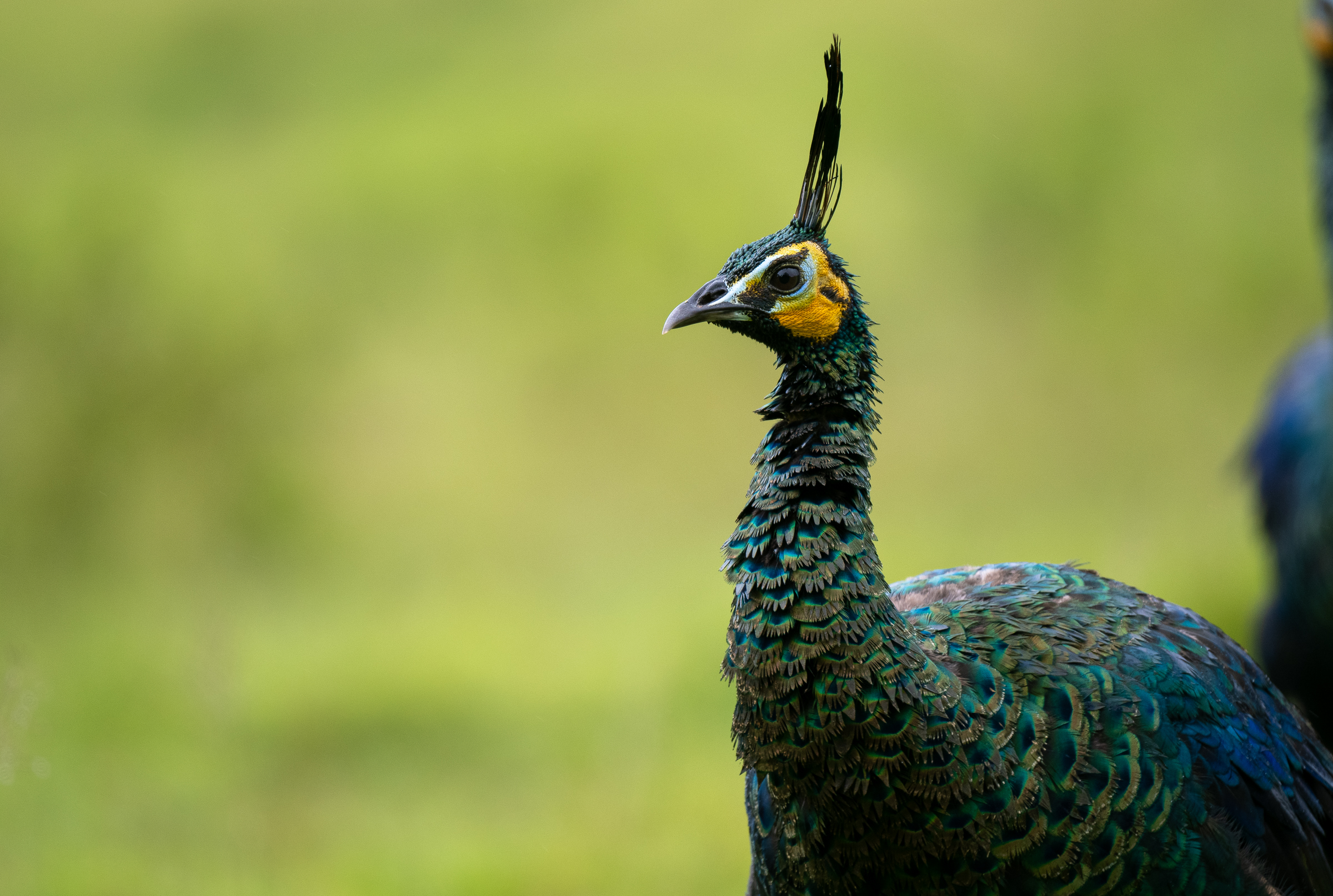

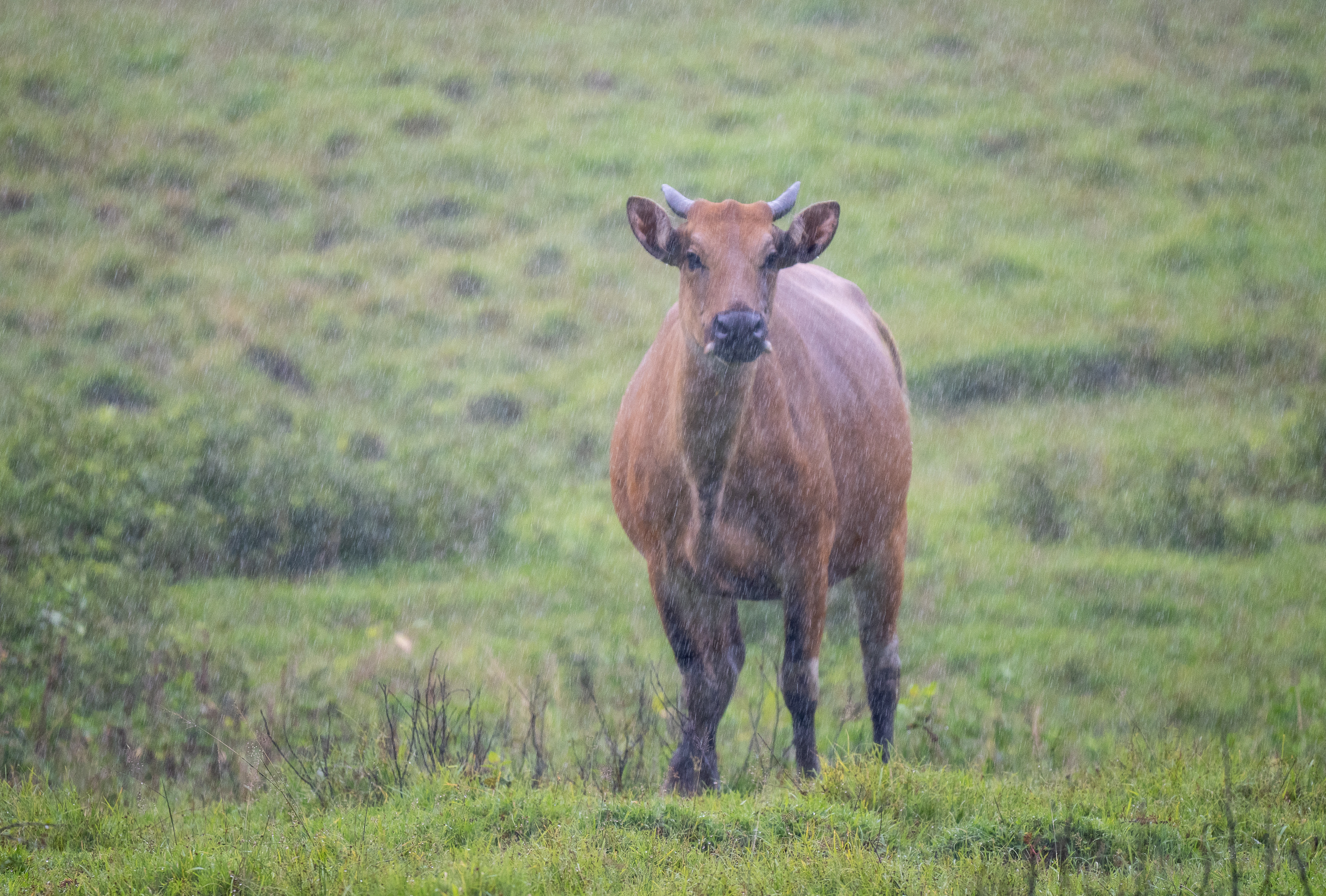







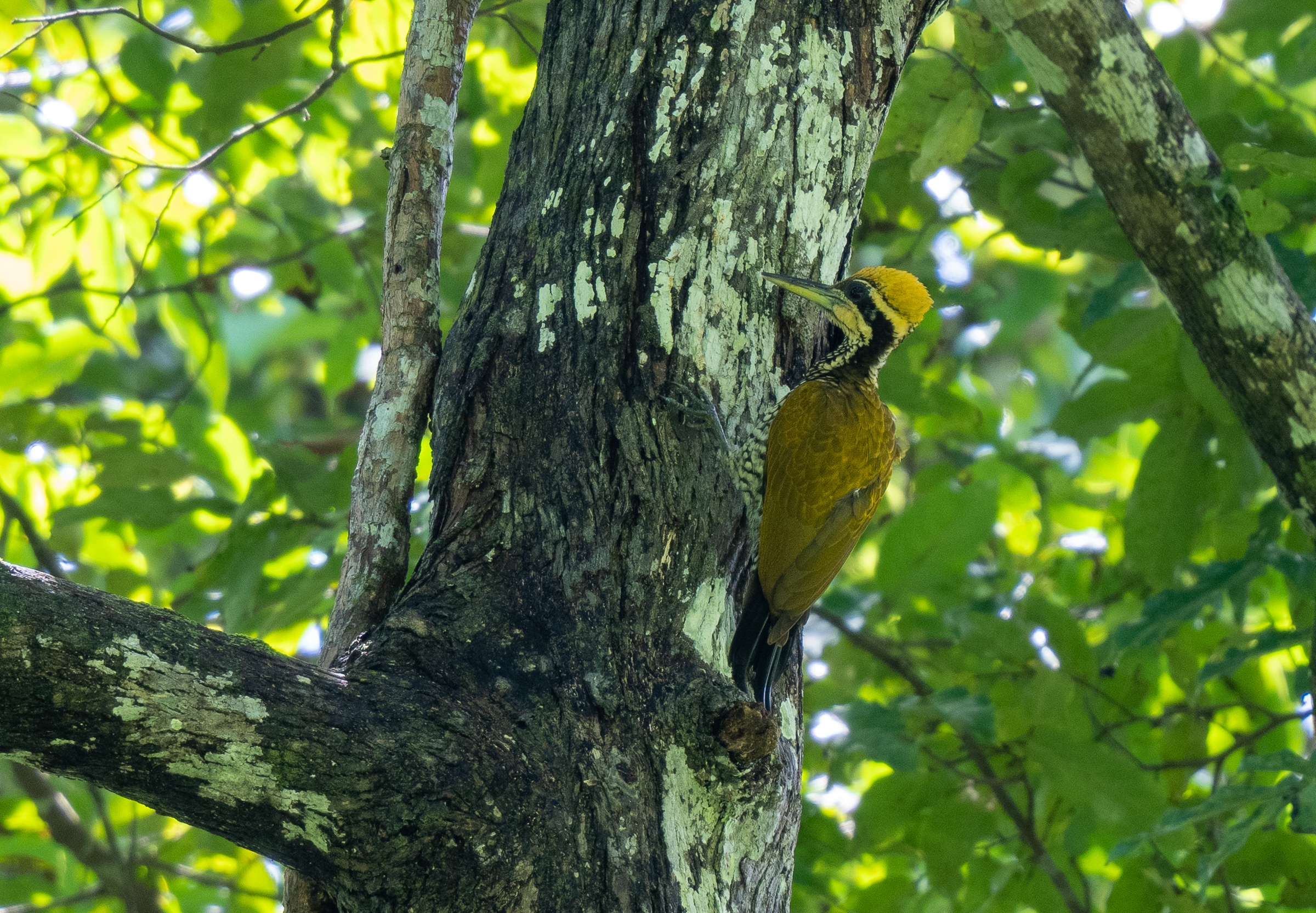

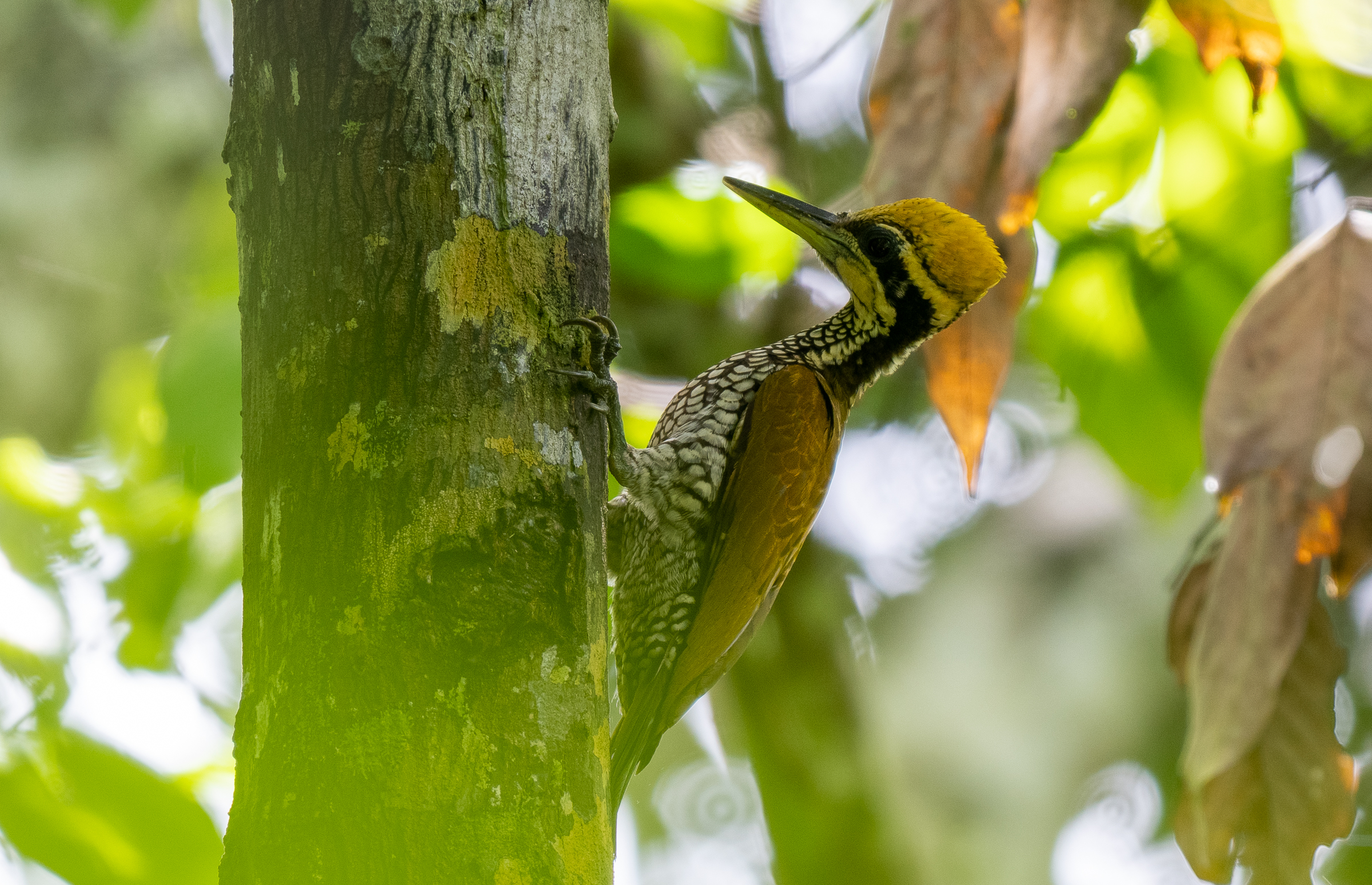




















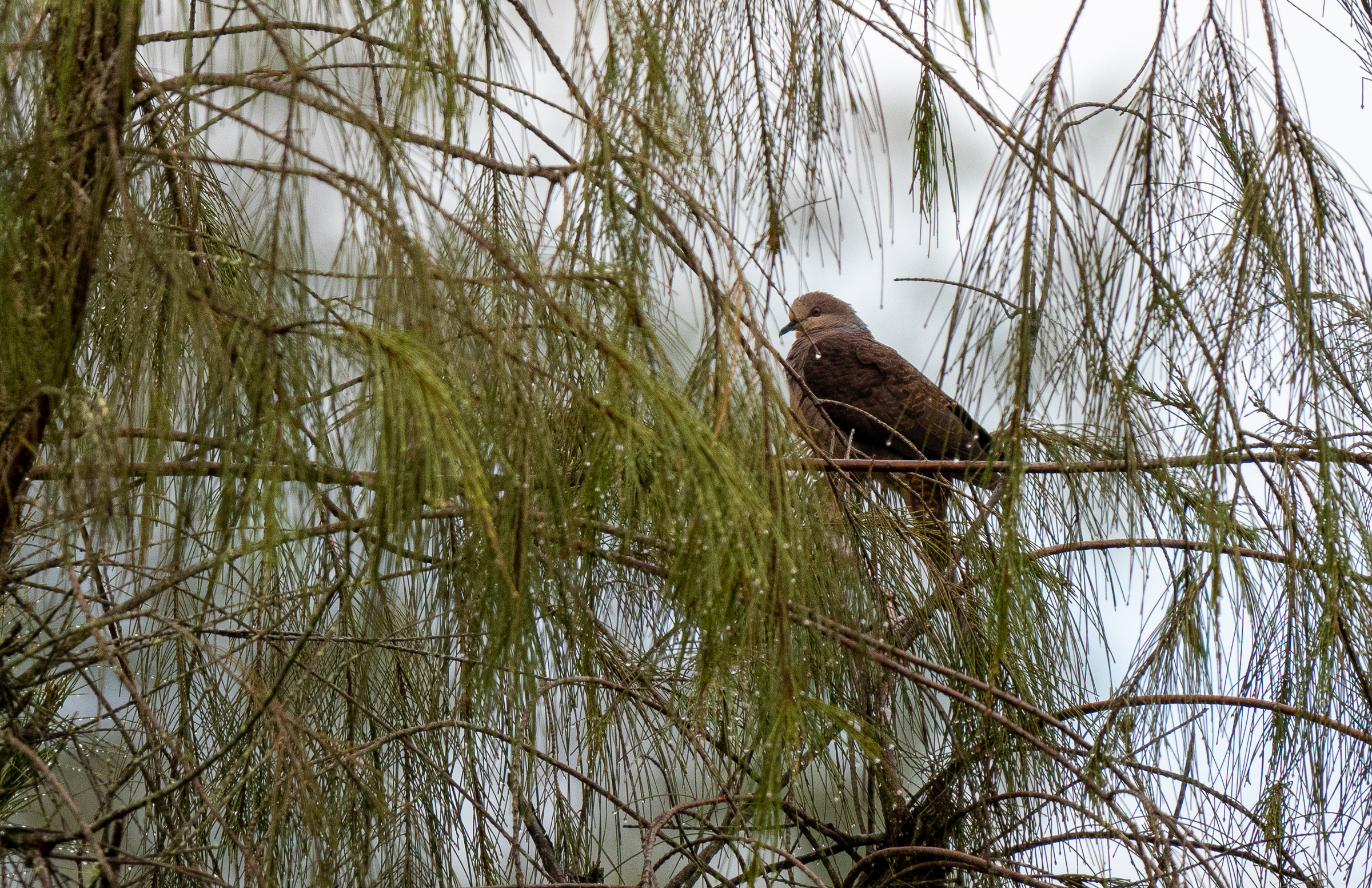



















Comments
Post a Comment